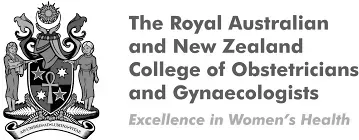Fibroids
What are Fibroids?
Fibroids, or uterine fibroids or leiomyomas, are non-cancerous growths that develop in or on the uterus. They consist of smooth muscle cells and fibrous connective tissues and can vary in size from tiny, undetectable nodules to large masses that can distort and enlarge the uterus.
Impact of Fibroid on Anatomy and Health
In some cases, fibroids can cause complications, including
- Excessive menstrual blood loss can cause anaemia. Symptoms of anaemia include breathlessness, fatigue and paleness.
- Large fibroids can press against the bladder, causing a sensation of fullness or discomfort and the need to urinate.
- The presence of fibroids can interfere with the implantation of a fertilised egg and cause infertility or difficulty conceiving.
- During pregnancy, fibroids can reduce blood flow to the placenta or compete for space with the developing baby. This may result in problems such as a miscarriage or premature delivery.
Risk Factors for Fibroids
- Women between the ages of 30 and 50 are most commonly affected by fibroids. The risk increases as women approach menopause.
- Having a family member with fibroids increases a woman's risk of developing them.
- African American women are more likely to develop fibroids at a younger age compared to women of other racial backgrounds. They also tend to have larger and more numerous fibroids.
- Overweight and obese women are at a higher risk of developing fibroids.
- A diet high in red meat and low in green vegetables, fruit, and dairy can increase the risk of fibroids.
- Fibroids are hormone-dependent, growing in response to oestrogen and progesterone. Women who start menstruating at an early age or have a higher lifetime exposure to these hormones are at increased risk.
- Lack of physical activity and high alcohol consumption are also associated with an increased risk of developing fibroids.
Causes of Fibroids
The exact cause of fibroids is not well understood, but several factors are believed to contribute to their development:
- Hormones: Oestrogen and progesterone are the hormones that regulate the menstrual cycle and promote the growth of fibroids. Due to a decrease in hormone levels after menopause, fibroids tend to shrink.
- Genetic Changes: Many fibroids contain changes in genes that differ from those in normal uterine muscle cells.
- Growth Factors: Substances that help the body maintain tissues, such as insulin-like growth factors, may affect fibroid growth.
- Extracellular Matrix (ECM): Cells produce ECM to provide structure to tissues. The ECM is increased in fibroids, making the cells more fibrous and promoting their growth.
Symptoms of Fibroids
The majority of women with uterine fibroids are asymptomatic. Others may experience:
- Heavy periods
- Prolonged menstrual periods
- Bleeding between periods
- Pelvic pressure or pain
- Awareness of a pelvic or abdominal mass
- Frequent urination
- Difficulty in emptying your bladder
- Constipation
- Backache or leg pain
- Difficulty getting pregnant
Some women do not have any symptoms.
Types of Fibroids
Based on their location within the uterus, uterine fibroids can be classified as
- Submucosal fibroids: Sited inside the uterine cavity below the inside layer of the uterus – the endometrium.
- Intramural fibroids: Sited within the muscular wall of the uterus
- Subserosal fibroids: Sited beneath the serosa (the membrane covering the outer surface of the uterus)
- Pedunculated fibroids: Develop on a stalk attached to the outer wall of the uterus
Diagnosis of Fibroids
Fibroids are often diagnosed during a routine pelvic exam. However, if fibroids are suspected, additional tests may be needed to confirm the diagnosis and assess their size and location:
- Pelvic Exam: During a pelvic exam, a doctor can often feel irregularities in the shape of the uterus, suggesting the presence of fibroids.
- Ultrasound: An abdominal or transvaginal ultrasound uses sound waves to create images of the uterus. This is the most common test to confirm the presence of fibroids.
- Magnetic Resonance Imaging (MRI): MRI provides detailed images of the uterus and can help determine the size and location of fibroids, particularly in complex cases.
- Hysterosonography: Also known as saline infusion sonography, this test involves injecting saline into the uterine cavity to expand it, providing clearer ultrasound images of the endometrium.
- Hysteroscopy: A thin, lighted telescope (hysteroscope) is inserted through the cervix into the uterus to examine the uterine cavity. This can help identify submucosal fibroids.
- Laparoscopy: A minimally invasive procedure where a small camera (laparoscope) is inserted through a small incision in the abdomen to view the outside of the uterus and surrounding organs.
- Endometrial Biopsy: In some cases, a small sample of the uterine lining may be taken to rule out other conditions, such as endometrial cancer.
Treatments for Fibroids
The treatment for fibroids depends on the severity of symptoms, the size and location of the fibroids, and the patient's desire for future pregnancies. Options include:
- Watchful Waiting: If fibroids are not causing symptoms, a "watchful waiting" approach may be recommended, with regular check-ups to monitor growth.
- Medications:
- Hormonal Therapy: Birth control pills, progestin-releasing intrauterine devices (IUDs), and gonadotropin-releasing hormone (GnRH) agonists can help reduce symptoms.
- Non-Hormonal Medications: Nonsteroidal anti-inflammatory drugs (NSAIDs) and antifibrinolytic agents can help manage pain and heavy bleeding.
- Minimally Invasive Procedures:
- Uterine Artery Embolization (UAE): Small particles are injected into the arteries supplying the uterus, blocking blood flow to fibroids and causing them to shrink.
- MRI-Guided Focused Ultrasound Surgery (FUS): High-intensity ultrasound waves destroy fibroid tissue.
- Endometrial Ablation: The lining of the uterus is destroyed to reduce heavy bleeding. However, this treatment does not remove the fibroids.
- Surgical Procedures:
- Myomectomy: Surgical removal of fibroids while preserving the uterus, suitable for women who wish to retain fertility.
- Hysterectomy: Complete removal of the uterus, providing a permanent solution for fibroids. This is recommended for women who do not wish to retain fertility.
Fibroids and Pregnancy
Because fibroids can grow back, those women planning to become pregnant must try to conceive as early as possible after the myomectomy procedure. However, following surgery, we will advise you to wait at least 3 to 6 months until the uterus heals. This should be discussed specifically with your treating doctor.
Risks During Pregnancy
Studies indicate that the presence of uterine fibroids, depending on their size and location, can increase the risk of complications such as breech presentation, increased chance of Caesarean section, increased bleeding post-delivery of the baby, premature labour and rarely, growth restriction.
What if Fibroids are Untreated?
If fibroids are left untreated, several potential complications and issues can arise, especially if they are symptomatic:
- Anaemia: Persistent heavy menstrual bleeding can lead to significant blood loss and anaemia, causing fatigue, weakness, and other health issues.
- Severe Pain: Untreated fibroids can cause ongoing or worsening pelvic pain, pressure, and discomfort, significantly affecting quality of life.
- Fertility Problems: Fibroids can interfere with conception and pregnancy. They may block the fallopian tubes, disrupt implantation, or increase the risk of miscarriage and preterm labour.
- Urinary and Bowel Issues: Large fibroids can press on the bladder and rectum, leading to frequent urination, difficulty emptying the bladder, constipation, and pain during bowel movements.
- Complications During Pregnancy: Pregnant women with fibroids are at higher risk for complications, such as placental abruption, foetal growth restriction, and the need for caesarean delivery.
- Degeneration: Sometimes, fibroids may outgrow their blood supply and begin to degenerate, causing acute pain and other symptoms. This is known as "red degeneration."
- Quality of Life: Symptoms such as heavy bleeding, pain, and pressure can significantly impact daily activities, emotional well-being, and overall quality of life.
Early diagnosis and appropriate management of fibroids can help mitigate these risks and improve overall health and quality of life. Regular follow-ups with a gynaecologist are essential to monitor fibroid growth and manage symptoms effectively.



Contact
Melbourne IVF
268 Manningham Rd, Templestowe Lower VIC 3107
New Patient - (03) 9006 5570
Existing Patient - 03 9473 4444
Practice Hours:
Mon - Fri 7:00 am to 4:30 pm
Sat - by prior arrangement
All Rights Reserved | Dr Yousif Alyousif
